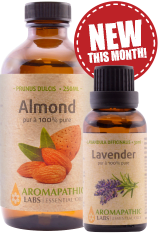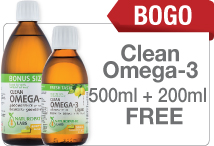Childhood Exanthems
Updated Oct. 25th, 2017
It's that time of year. The little ones are heading to school and inevitably exposed to much larger groups of children. With this also comes a higher risk of catching a virus or bacteria. One of the most challenging to both diagnose and treat is 'the rash', or exanthem, as commonly referred to in the healthcare field. These infections are especially common in childhood. Viral exanthems are the most common.
Pediatric and childhood exanthems do not always fit the 'classic' picture and can often be confused for each other. That being said, they can generally be classified based on clinical features such as distribution, time course and other factors of physical examination.
Measles, rubella, scarlet fever, fifth disease, roseola and chicken pox are some of the more well-known and common skin conditions that affect children and will be discussed in this article.
Measles
Measles is an extremely contagious infection that affects children and is caused by the paramyxovirus. It has become less common in the past 50 years thanks to vaccination, however it does still have a presence. Peak times for this virus are between late winter and early spring. Upon infection, the measles will exist in the body for 2-4 says in a prodromal period, which means it hasn’t shown symptoms on the skin yet. During this period, symptoms include a fever, cough and runny nose, and an infection of the inner eyelid and outermost layer of the eye called conjunctivitis (pink eye). Grey/white/blue papules found on the bucal membrane, the inside lining of the cheeks, are called Koplik's spots and are a tell tale sign of measles. It should be noted that not all individuals who have the measles will have Koplik's spots. After a few days, a 'rash' will generally appear at the hairline and spread downward over the following 3-4 days. The lesions are dark red to purple in colour and will blanch, or turn white with pressure. Symptoms peaks at at about 4 days and lesions fade over the next one to two week period. Measles are contagious from approximately 3-4 days prior to the rash developing to about four days after the rash has cleared. Measles can affect individuals of any age.
The MMR Vaccine
The MMR vaccine is a combination vaccine developed to prevent measles, mumps and rubella (German measles). It is generally administered to children around the 1 year mark, with a second dose administered around the time that children begin school. The second dose was introduced in the late 1980's, as approx. 2-5% of children were not developing immunity with just one administration. Some healthcare professionals believe vaccination is essential, given there is a lack of effective anti-viral treatment options.
There has been some controversy about the safety of combination vaccinations in general, as well as the MMR vaccine in particular being related to autism. Perhaps because of this, over the past few years, more and more parents are choosing against vaccination or choosing to follow a delayed schedule.
German Measles (Rubella) tends to be less severe than 'true measles', with very similar symptoms. Rubella is caused by the Togavirus. One of the characteristics that distinguish Rubella from many of the other infections mentioned here is that peak incidence tends to be in adolescence. Given the MMR vaccine is so standard, incidence of Rubella has decreased dramatically. Again, the virus is spread through respiratory secretions and patients may be contagious anywhere from one week prior to the rash outbreak to at least one week after its resolution. Low fever and tender cervical-occipital lymphadenopathy are both characteristic of Rubella, along with general upper respiratory tract infection symptoms. About half the cases are asymptomatic, meaning the infection is commonly overlooked or ignored. Rubella lesions differ slightly from that of 'true measles' in that they are pink, gradually changing to light brown macules that do not blanch (turn white when pressed). Complications of Rubella are rare, with the most serious being associated with pregnancy, specifically maternal-fetal transmission in the first trimester. This can cause congenital Rubella in the fetus, potentially causing cardiac abnormalities, deafness, blindness and even fetal death.
Chicken Pox (Varicella)
Chicken pox is perhaps one of the most well-known childhood exanthems. Although most adults can recall when they were infected as children, varicella can affect individuals of any age. In 1995, a chicken pox vaccine was introduced, although breakthrough infections do occur in 15-20% of vaccinated individuals. Some feel it unnecessary, as childhood chicken pox infections tend to be very mild, although the itching can get annoying to say the least. Infections in adulthood tend to be more severe in nature. Once again, contact with respiratory secretions, as well as the lesions themselves can spread the varicella infection. There is a mild 2 day prodrome, which is characterized by a slight fever and general malaise. The prodrome often goes unnoticed. Itchy, papular lesions develop on the face and scalp, moving to the trunk and extremities. The lesions eventually become pustular and crust before healing over. There are often lesions at varying stages of development on one individual. All of these lesions should heal within 1-2 weeks. The infection is contagious from prodrome through the crusting stage. Individuals can have a reactivation of a latent infection, often occurring in adulthood. This results in herpes zoster (shingles) or a primary chicken pox infection in some. There are few, if any, complications of primary infection, usually limited to the extent to which the individual scratches at the lesions (scarring, hypopigmentation, etc.). Congenital varicella can be fatal or cause severe developmental consequences, but these complications are rare.
Erythema Infectiosum (Fifth Disease, or Slapped Cheek Disease)
'Slapped cheek disease' is characterized by a red facial exanthem, usually on the cheeks. Winter and Spring months are the most common time for children ages 4-10 years old, to contract the viral infection. Erythema Infectiosum is caused by the Parvo B19 virus. Exposure to this virus via respiratory droplets is common and many children will develop antibodies to the virus. Outbreaks usually begin with a highly infectious prodromal period consisting of non-specific symptoms such as low fever, runny nose and headache. A sudden onset macular facial rash, sparing both the nasal bridge and the area around the eyes then develops. Once the rash is visible, the infectious period is over. In some children, when the facial exanthems fade, maculopapular lesions appear over the trunk and extremities and can last up to 6 weeks. This rash can be itchy with a lace-like appearance to the central area. Once again, Erythema Infectiosum is relatively harmless to the childhood population, with very few children experiencing some arthralgia, which disappears once the infection resolves. Pregnant women do need to be cautious around infected individuals, however, as transmission of parvo B19 from mother to fetus can cause serious consequences for the fetus, including fetal anemia, hydrops fetalis and in some cases death. These negative outcomes are most commonly associated with infection in the first and second trimesters.
Scarlet Fever
Children between the ages of 2 – 10 years old are at the highest risk of Scarlet Fever infection. Scarlet fever, unlike most of the other causative agents discussed above, is caused by a bacteria called Streptococcus pyogenes. Prior to the typical Scarlet Fever rash, children will often experience tonsillitis or sore throat, along with pharyngitis. The duration of this prodromal stage varies from child to child, eventually all ending with a pinpoint rash that starts centrally on the trunk (and sometimes face) before moving to the extremities. This is one characteristic that makes scarlet fever easier to distinguish from other exanthems such as those of rubeola and rubella. Erythema is often more noticeable in skin folds and around the neck. Another distinguishing feature is that fever and sometimes vomiting and headache accompany the breakout, instead of being part of the prodrome. One other key feature of scarlet fever is the typical 'strawberry tongue' , red and hypertrophic papilla on the tongue of those infected. This is often obscured by a thick white tongue coating. The rash and other symptoms begin to resolve within 5-7 days. The benefit to a bacterial infection is that Scarlet fever can be treated with antibiotics, which help to significantly reduce the chance of sequelae, such as rheumatic fever, acute glomerulonephritis, middle ear infection, myocarditis, mastoiditis, and pneumonia.
Roseola Infantum
Roseola Infantum affects the youngest group thus far, with peak incidence at 6-7 months of age and most commonly occurring in children less than 36 months. The human herpes virus 6 or 7 is responsible. Again, the virus is spread through saliva and respiratory secretions. Unlike some of the other infections mentioned here, the virus remains dormant initially following infection, it then has the potential to reactivate when the immune system is compromised. Roseola has no prodrome. The first presenting symptom is a sudden high fever, usually last about four days. The fever may be accompanied by vomiting, diarrhea and some lymphadenopathy. In about 30% of the cases, a rash will erupt once the fever has subsided. The rose coloured lesions spread outwards, starting on the trunk. The rash is transient and may last only a few hours to a few days. Due to very high fever and the younger age of this population, Roseola infantum can be associated with febrile seizures.
Natural Treatment Options
In terms of natural treatments, keep in mind that most of these infections simply need to run their course. That being said, there are some anti-virals that may speed up resolution of the systemic symptoms associated with the virus, such as headache, nausea, vomiting, fever, etc. Elderberry and Olive leaf extract, either in combination, or used separately, both have effective anti-viral properties. They have all been shown to slow or prevent the varicella virus from replicating. Olive leaf is also anti-bacterial, meaning it will also be effective against Scarlet Fever. Echinacea has also been shown to be helpful in many of these infections. Aloe vera gel can be applied topically to soothe the lesions associated with any of the above. It is healing (anti-inflammatory) and soothing, decreasing itch and speeding resolution. Colloidal silver can also be found in spray from and can be used to treat external eruptions associated with these viral and bacterial infections. An oat bath can also help to soothe the itch and heal lesions. Put ½ cup to 1 cup of oats in a cheese cloth (I also use old panty hose), tie it tightly and put it right in the bath water with you, squeezing from time to time. Make sure to keep the bath warm, but not too hot, as hot water will further dry out the skin. Decrease intake of refined sugar and increase vegetable and fruit intake. Soups are an excellent veggie rich meal, that also help to hydrate. This brings me to my last point, be sure to increase fluid intake and with younger children, you may want to consider an electrolyte replacement, to prevent dehydration.























Great article.
Hello Latiesha,
We're glad you enjoyed this article and were able to further your knowledge about natural health. If you have any questions, please reach out, we are always happy to help.
Have a healthy day!